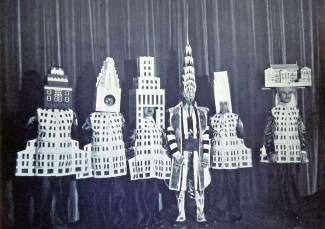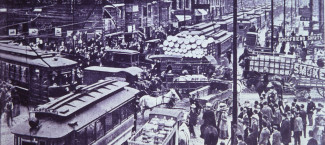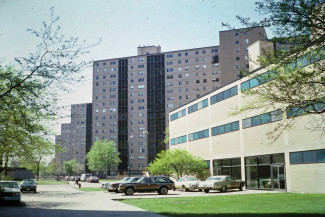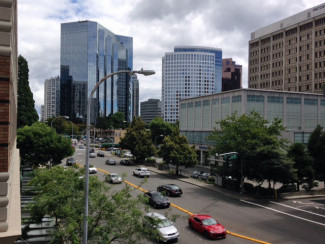
Johns Hopkins UniversityEst. 1876
America’s First Research University
The great twentieth-century transformation of urban landscapes

Urban landscapes are where Pokémon Go players have recently started to go to catch virtual creatures lurking in a GPS version of what I naively think of as the real world. They are visible environments that are constant background to our lives in towns and cities, usually seen yet not really noticed. Only when we visit somewhere for the first time, or a familiar old building is replaced by a glassy tower, or perhaps a Pokémon Gym is not where it was expected to be, do we begin to wonder why somewhere looks like it does. This is precisely the question I set out to answer in The Modern Urban Landscape.

Virtual reality before Pokémon. Architects at the New York Beaux Arts Ball in 1931, with William van Alen as his Chrysler Building.
I quickly discovered that “modern” means whatever has been done since the 1880s because almost everything we see in cities is newer than that. Older parts of cities, such as medieval streets in European towns or the elegant avenues and the White House built by slaves in Washington D.C., attract a lot of our attention but are mere specks in metropolitan regions that now can stretch for a hundred miles. Seventy-five per of Americans live in urban areas created since 1880, and at least half of the current population lives in urban and suburban landscapes made since 1950, so modern urban landscapes are what we experience most of the time and their scale dwarfs any fragments of old urban landscapes.
I chose the 1880s as a starting point because that was when steel frames for skyscrapers, electrical distribution systems and telephones were developed, all technologies that immediately made irreversible changes to the appearance of cities. They were reinforced by a remarkable sequence of innovative technological, architectural, and planning inventions and ideas that happened both in America and Europe before the Second World War. These included motor vehicles, paved roads, traffic signals, electric streetlights, ideas for comprehensive town planning, zoning, shopping plazas, gas stations, suburban neighborhood units, and the undecorated glass and concrete styles of modernist architecture.
The initial landscape impacts of these were scattered and limited, presumably because of unfamiliarity and interruptions caused by war and economic depression. The situation was entirely different after the Second World War when the needs of urban reconstruction and booming populations had to be quickly addressed. Pre-war urban innovations offered solutions that were adapted into a set of effective urban practices that included official city planning, the corporate adoption of modernist architecture for skyscrapers, shopping malls, commercial strips, and mass-produced suburban houses in automobile oriented developments. Cities leapt outwards along arterial roads and expressways, and upwards as modernist towers and projects rose from redeveloped inner cities. Street and city names may have been left unchanged, but by 1980 these were clearly not the same streets and cities they had been in 1940, let alone in 1880. In just three decades the appearance of cities was utterly transformed.


Urban landscape change in Chicago. Horse-drawn congestion at Dearborn and Randolph about 1900; the view about 1980 looking south from the modernist buildings of the Illinois Institute of Technology designed by Mies van der Rohe in the 1930s, to an urban renewal housing project constructed in the 1960s in South Chicago and now demolished.
This post-war urban boom has not abated, though ways of making modern urban landscapes have been modified, for instance by protecting cultural and natural heritage, and there have been some shifts in architectural styles and planning practices. Nevertheless, it seems that the well-established forms of skyscrapers, wide streets and plain surfaces have continued to prevail both in America, where a quarter of the population (80 million) lives, works, drives, and shops in urban and suburban landscapes created in the last thirty years, and in most rapidly growing cities around the globe. The great urban transformation of the twentieth century that I describe in The Modern Urban Landscape has not yet run its course.

The entirely post-1980 urban landscape of Bellevue, an edge city of Seattle. 2016
E. C. Relph is professor emeritus of geography at the University of Toronto. He is the author of Place and Placelessness, Rational Landscapes and Humanistic Geography, and Toronto: Transformations in a City and Its Region. His 1987 book, The Modern Urban Landscape: 1880 to the Present, has just been rereleased with a new preface.


